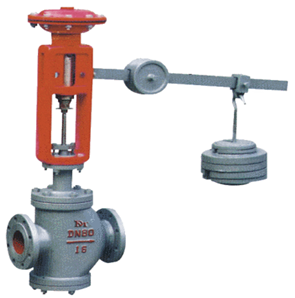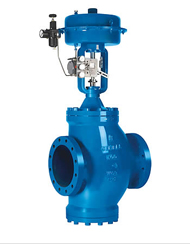Home > Product > Control Valve



Working principle and purpose of the product:
The regulating signal of the pressure regulating valve with direct action after the valve is obtained from the pipeline behind the valve. With the increase of the regulated pressure acting on the membrane chamber and overcoming the force generated by the heavy hammer, the valve core moves downward and gradually closes with the valve seat, reducing the flow cross-section. The valve core moves upward, increasing the flow cross-section until the regulated pressure equals the given value.
The regulating signal of the direct acting pressure regulating valve in front of the valve is obtained from the pipeline in front of the valve. With the increase of the regulated pressure acting on the membrane chamber, it overcomes the force generated by the heavy hammer, and the valve core moves downward, gradually leaving the valve seat, increasing the flow cross-section until the pressure in front of the valve drops to the given value; On the contrary, when the pressure on the membrane chamber is effective, the force generated by the heavy hammer causes the valve core to rise and gradually close with the valve seat, reducing the flow cross-section until the pressure in front of the valve increases to the given value. This valve is used for automatic regulation in industrial production processes such as chemical, petroleum, metallurgy, power, papermaking, and textile.
Product Structure Features:
N direct acting pressure regulating valve is a type of regulating valve that does not require external energy and operating medium. It operates independently based on the energy of the controlled fluid and maintains a constant variable before or after the valve. It is used to automatically regulate the pressure of non corrosive gases, petroleum, and steam below 200 ℃ to a given value. It has a simple structure, reliable operation, easy maintenance, fire and explosion prevention, and is inexpensive.
The direct acting pressure regulating valve consists of a lever heavy hammer type diaphragm actuator and a regulating valve mechanism. The valve rear type is used to maintain a constant pressure in the pipeline behind the regulating valve, and the regulating signal is obtained from the pipeline behind the valve. The valve front type is used to regulate the pressure in the pipeline in front of the regulating valve to a constant value, and the regulating signal is obtained from the pipeline in front of the valve.
